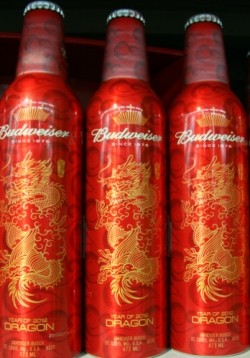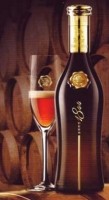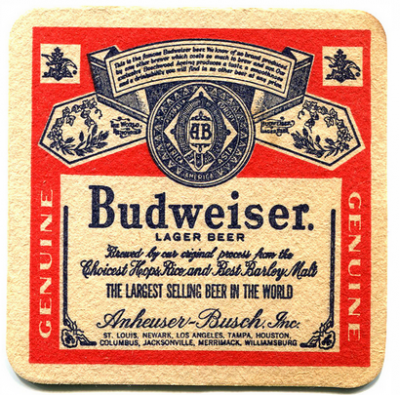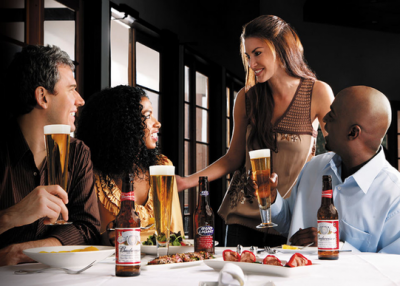'Blue collar' beers like Budweiser go blue chip on Chinese market

Asked if any western brands were doing a particularly good job of ‘cracking’ China, Mintel’s director of Asia-Pacific research, Matthew Crabbe told BeverageDaily.com: “Budweiser [AB InBev] has done quite well and also, interestingly, Pabst Blue Ribbon, which remarkably has gone in right at the top end.
“A bottle of their latest brew costs around $40 in China. It’s certainly something ridiculous like that. So they’re going for the super-premium market, but Pabst Blue Ribbon in the US is a blue collar, down on your luck student sort of beer," he added.
Seasonal packaging designs
Associated marketing talked about Pabst Blue Ribbon 1844 (pictured below) being aged in sherry barrels, Crabbe said – the beer is not the same as its US namesake – stressing its prestige. “I’m sure you’ll see a lot more developments like this,” he said.
“Likewise, in the US Budweiser is very much a blue collar beer. But in China it’s a premium import with special packaging. For instance, for Chinese New Year this year they launched a limited edition embossed bottle [pictured].
"This is not just targeting the high-end market, but also the seasonal, winter lull and trying to drive a bit more interest,” Crabbe told BeverageDaily.com.
He noted that the big Western companies were driving premium beers because it was difficult to compete at the bottom end of the market due to small margins.
And higher-end beer demand was growing among middle-class Chinese, with flavor increasingly important and beer seen less as neutral tasting ‘refreshing beverage’, Crabbe said.
“Demand is growing. Not just for connoisseur products for men in their 40s, but also among younger consumers and women,” he said.
“The latter are starting to drink beer but have not really been targeted in terms of marketing and product design. That’s an opportunity.”
Boosting local brands
A lot of companies – particularly foreign companies, were now looking at more detailed demographic data to target specific consumer groups, Crabbe said, which was essential in a country the size of mainland Europe and the US combined.
Increasingly, big western and domestic beer players were also looking at acquisitions rather than joint ventures and partnerships, he added.
“Particularly in the local markets, a quick way to build capacity is just to buy the local competition, then you’ve got a brewery up and running,” Crabbe said.
The mistake some large companies had made before was to subsume and kill off local brands, according to the analyst.
“But some of them have quite a strong local following. These are assets that can be used to develop the premium brands. Take a local asset, say spring water or wheat, build the brand, then perhaps export it elsewhere in China as a premium beer."







